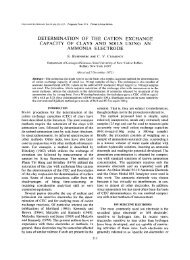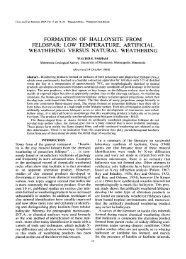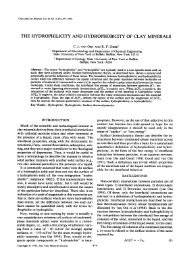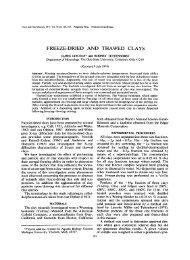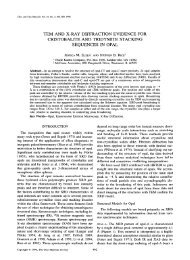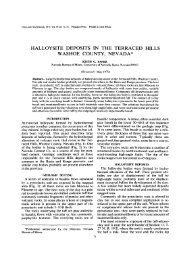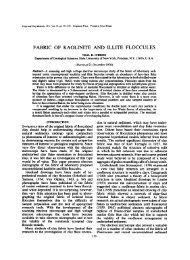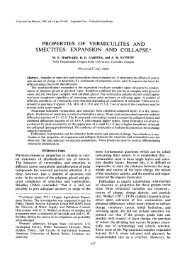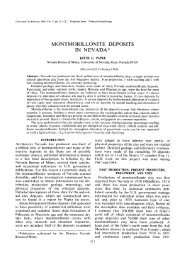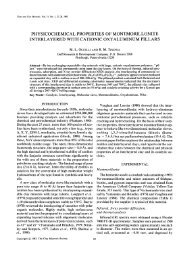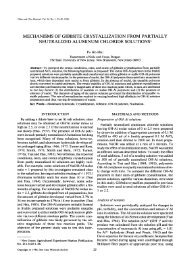mineralogical and geochemical study of clay mineral ...
mineralogical and geochemical study of clay mineral ...
mineralogical and geochemical study of clay mineral ...
You also want an ePaper? Increase the reach of your titles
YUMPU automatically turns print PDFs into web optimized ePapers that Google loves.
368 J. LUCAS <strong>and</strong> G. ATAMAN<br />
131<br />
12.<br />
II.<br />
I0.<br />
9.<br />
8.<br />
7.<br />
6.<br />
5.<br />
4.<br />
%<br />
20<br />
15<br />
iol<br />
5 .<br />
ol<br />
F I F z My L T V Lo<br />
F i F z My L T V Lo<br />
AI20 ~<br />
Fig. 2. Variations in the chemical composition <strong>of</strong> the <strong>clay</strong> fraction (<br />
constant. Hence, the concentration <strong>of</strong> boron does<br />
reflect an increase in salinity, but its correlation<br />
with aluminum disturbs the phenomenon. One<br />
may thus use the boron content <strong>of</strong> <strong>clay</strong>s as an<br />
indicator <strong>of</strong> salinity provided that the <strong>mineral</strong>-<br />
ogical composition <strong>of</strong> samples to be compared<br />
remains constant.<br />
The chemical results confirm the phenomenon<br />
<strong>of</strong> <strong>clay</strong> <strong>mineral</strong> transformations in the Triassic<br />
Jura Basin <strong>and</strong> permit its more precise definition.<br />
The detritus supplied to the basin consists princi-<br />
%<br />
50.<br />
40.<br />
35.<br />
30.<br />
25.<br />
20.<br />
15.<br />
10.<br />
l F z My L T<br />
i El<br />
1/\N<br />
/I !<br />
V l_a<br />
"\\\\<br />
) <strong>and</strong> <strong>of</strong> the whole rock ( ..... ).<br />
pally <strong>of</strong> degraded 2:1 micaceous <strong>clay</strong> particles,<br />
Tet-Oct-Tet, i.e. degraded illite. Interlayer<br />
positions <strong>of</strong> these particles are largely stripped <strong>of</strong><br />
cations by continental weathering, leading also<br />
to a degradation <strong>of</strong> the silicate layer itself. Upon<br />
arrival in an environment <strong>of</strong> increased dissolved<br />
cation concentration, these interlayer positions<br />
tend to refill, especially with magnesium ions for<br />
which <strong>clay</strong> <strong>mineral</strong>s seem to have the strongest<br />
affinity. Thus, as magnesium is fixed, degraded<br />
lattices are progressively rebuilt to form mixed



